Table of contents
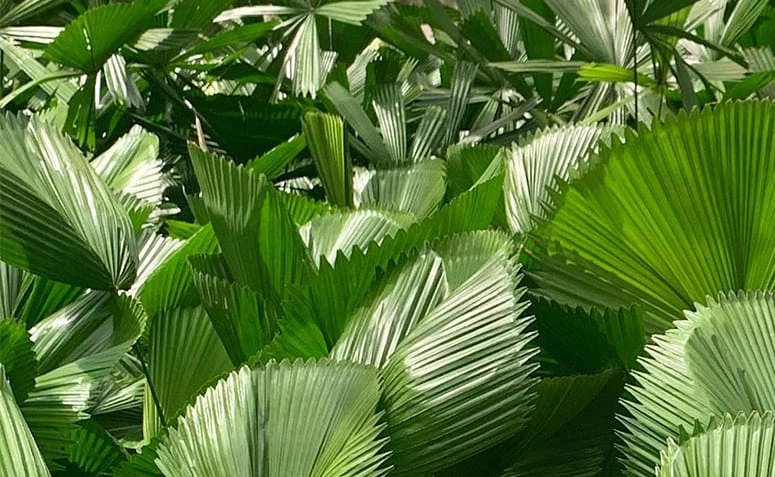
The fan palm is a type of ornamental plant that has large green leaves that enhance and enrich any environment. Because there are several species, it is easy to find one that suits your needs. Read on for more information about the different types and how to care for this plant.
Types of fan palm
There are six types of plants commonly called fan palms. Originating from tropical climates, they grow best in warm and humid areas. They like soil rich in organic matter and well drained. Most species are not resistant to cold and strong winds, which damage their leaves. We have separated for you more information about each type of species.
Big fan palm (Licuala grandis)
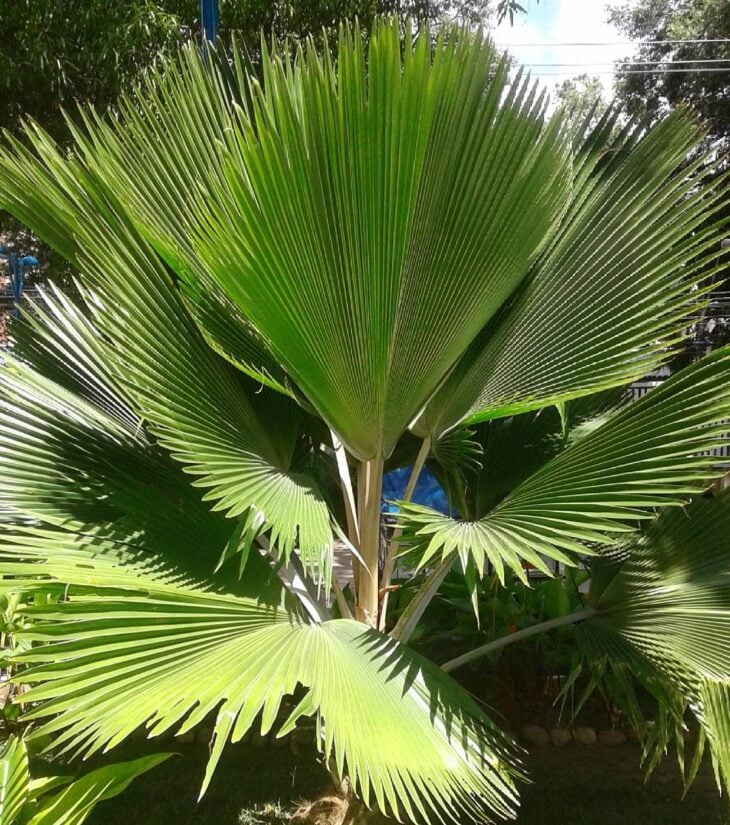
Also known as Japanese fan palm or licuala palm, it is native to Oceania, and accustomed to a humid tropical climate. In general it is considered an easy plant to maintain. It is recommended to plant it in places of half shade or well illuminated internal environments. In regions of hot and humid climate it is possible to plant it in full sun. Irrigation should be done twice a week.
See_also: Pallet panel: 40 creative projects made with almost nothingThe growth is slow and the adult plant can reach 3 meters. If planted indoors, be careful with exposure to air conditioning, if it is used constantly it can kill the plant. It is not resistant to frost and intense cold.
Round fan palm (Licuala peltata)
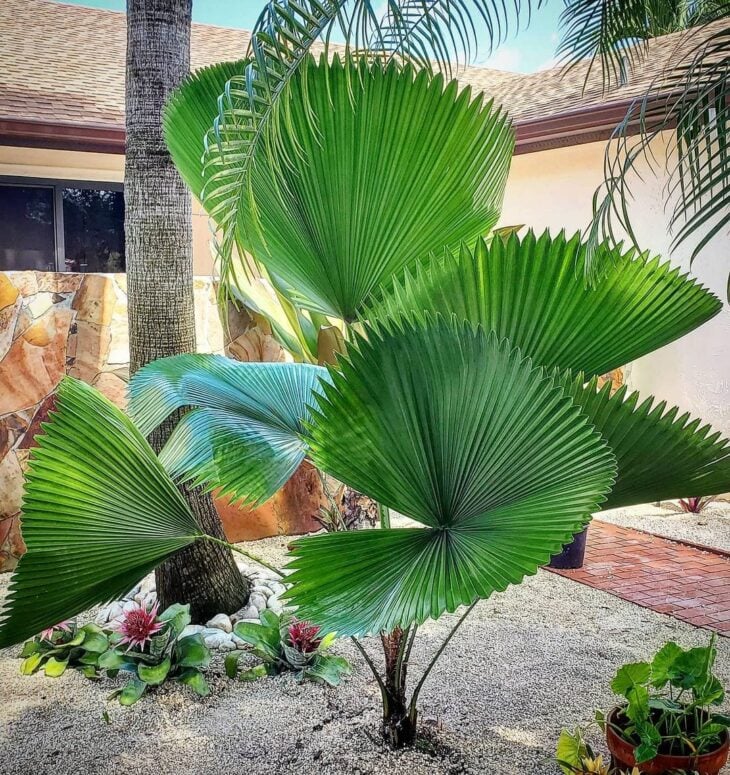
Native to Southeast Asia and Oceania, the Round fan palm has this name due to its completely rounded foliage, different from other species in which the leaf bends at the tip forming a triangle. Another particular characteristic of this species is that it develops a maximum of 15 leaves. Its growth is slow and can reach 5 meters.
It can be planted in half shade and well-lit indoors. For indoor decoration, it is recommended to use large pots and in places without the use of constant air conditioning. It is not resistant to strong winds, its leaves can easily be damaged. The recommended soil is sandy and rich in organic matter.
It requires extra care with irrigation, so the soil must always be moist. Dry environments can cause the leaf tips to burn, and spraying water on the leaves helps to avoid this problem. This is one of the few fan palms that survive lower temperatures.
Thorn Palm (Licuala spinosa)
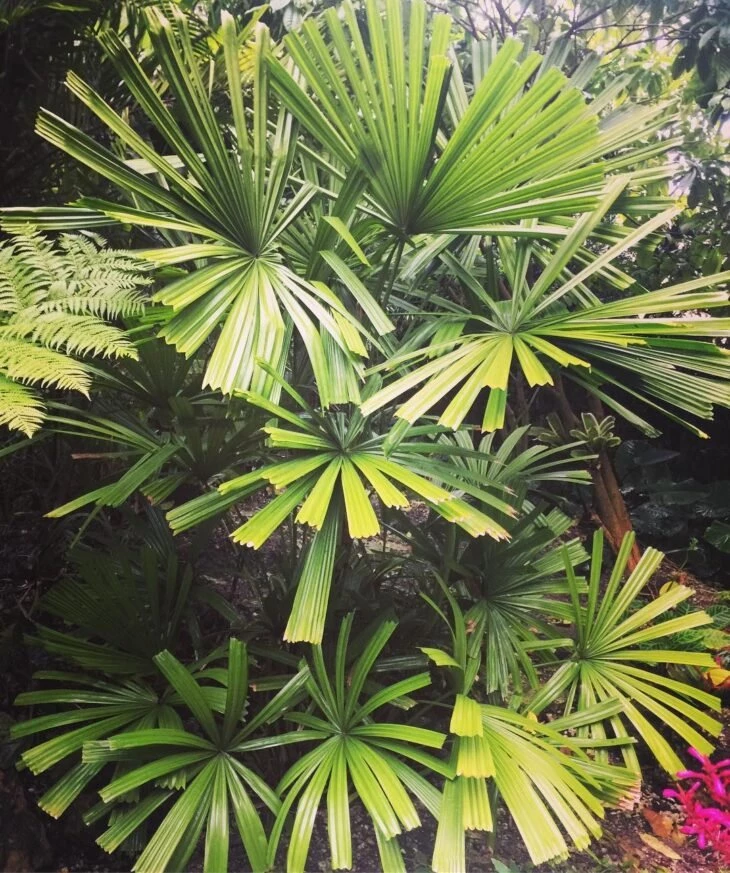
Unlike its sisters, this palm has its leaf divided into segments, which earned it the name of star lycuala. Coming from southwest Asia, it likes warm and humid climates. It grows well in full sun, half sun and indoors, in large pots. Like the other lycualas, it requires care against strong winds.
Good for those who live on the coast, the fan palm is resistant to saline soils and requires watering twice a week. The adult plant is 3 to 5 meters long and its appearance resembles that of the rhapis palm.
Mexico fan palm (Washingtonia Robusta)

The largest on the list, up to 30 meters long, also known as wahingtonia palm, is original from the southern U.S. and northern Mexico. Great choice for landscaping of outdoor areas, its growth is fast and is resistant to heat, cold and strong winds. However, because of its large size it is not recommended for indoor environments.
Another name used to identify this species is skirt palm, because its leaves invert and accumulate under the green leaves. About the care with it, it must be irrigated twice a week, with care not to soak the soil.
Fiji fan palm (Pritchardia pacifica)
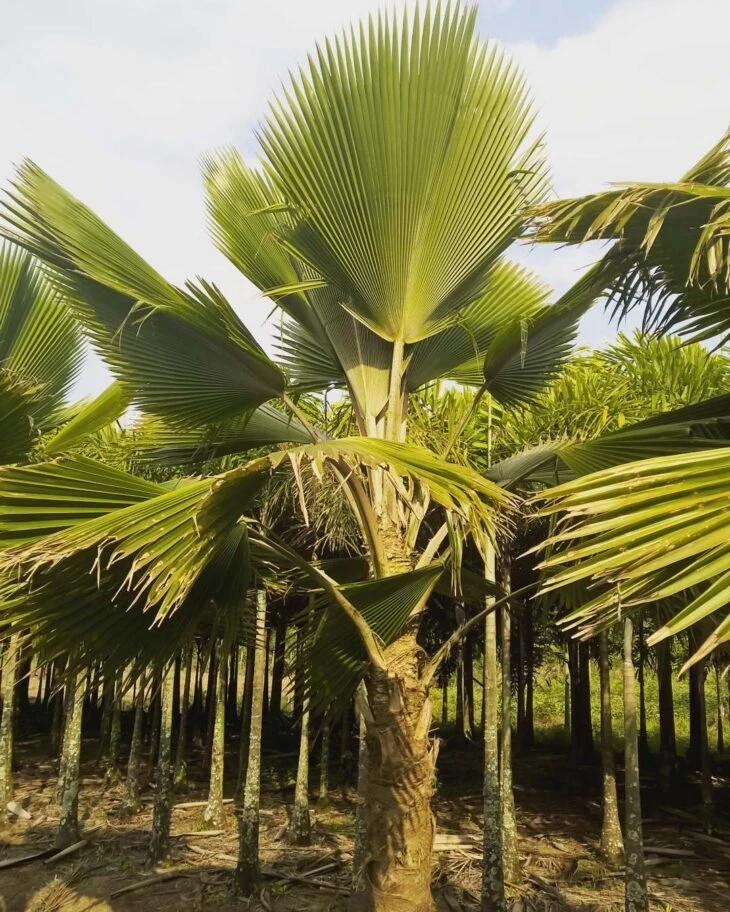
The name says it all, this palm is found in Fiji Islands, it likes warm and humid climate. It can be planted in full sun and it does well in coastal regions. They are very demanding regarding humidity, so they must be watered twice a week.
They can be used in pots only in their youth, but with time they must be replanted outdoors, as they reach a height of 12 meters. Their rounded leaves separate into pointed segments at the ends.
fan Palm (Livistona chinensis)
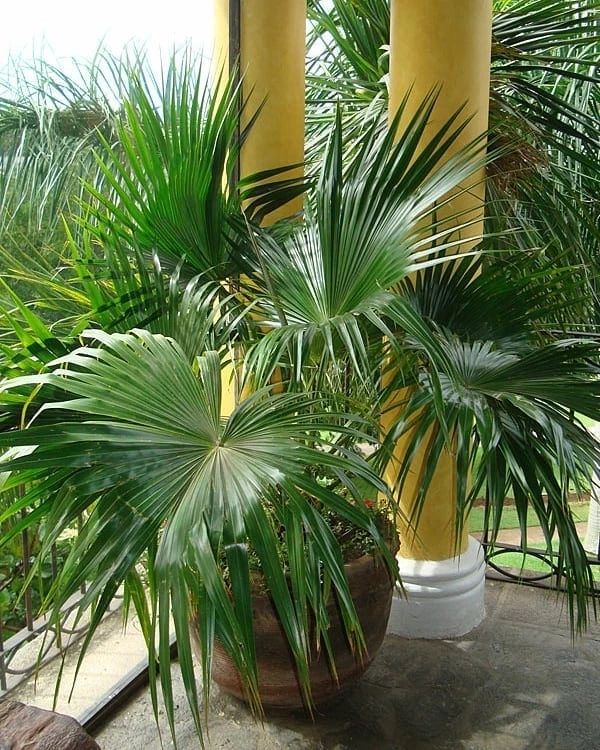
Another one of Southeast Asian origin, its leaves differ by having the tips divided into long segments. Resistant to coastal regions, it likes high humidity and has slow growth. It can be planted in half shade or full sun and it is recommended to grow the young seedlings in half shade, transferring them to full sun when grown.
It requires regular irrigation, twice a week, and well-drained soil rich in organic matter. They can even be planted in large pots, but it is important to remember that the adult plant can reach up to 15 meters. Regarding care, if the tips begin to yellow, water should be sprayed to improve humidity.
The common names of palm trees can vary depending on the region where you live, so it is always important to pay attention to the scientific name of the plant.
How to successfully plant and care for your fan palm
Here are some professional explanations of the fan palm, with tips on planting, maintenance, potting, and some information on different species:
Plant maintenance: irrigation, fertilization and pruning
Here you can find tips on fertilization, an example of how to do the correct pruning, and some information about the origin of licuala grandis.
Potting and Fertilizing
In this video you see a detailed explanation of how to prepare a pot with fertilizer to receive a fan palm seedling, demonstrated by landscape gardener Hudson de Carvalho.
In-depth information about palm trees, and examples of different species
Host Daniel explains the origin, care and general characteristics of the licuala grandis and licuala peltata palms. Full video!
See_also: 50 Christmas trees that are different and very creativeOverall, the fan palm is easy to care for and with this information you are ready to purchase your palm of choice.
28 pictures of fan palm trees in landscaping and decoration
We have selected some images of different species being applied in outdoor gardens, vases, and as a decorative element for arrangements and parties:
1. the highlight of the garden is the large fan palm tree
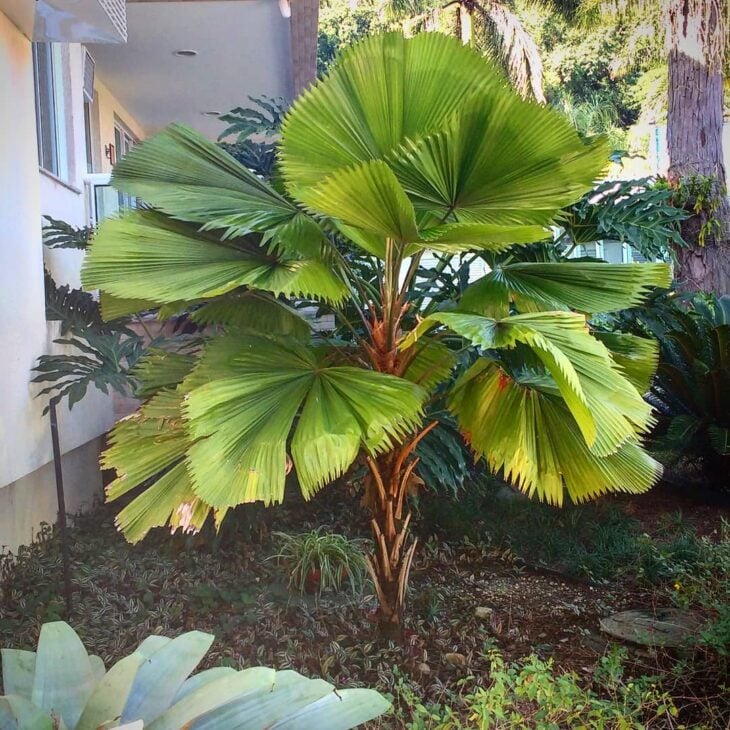
2. a palm tree from China makes it easy to enhance the landscaping
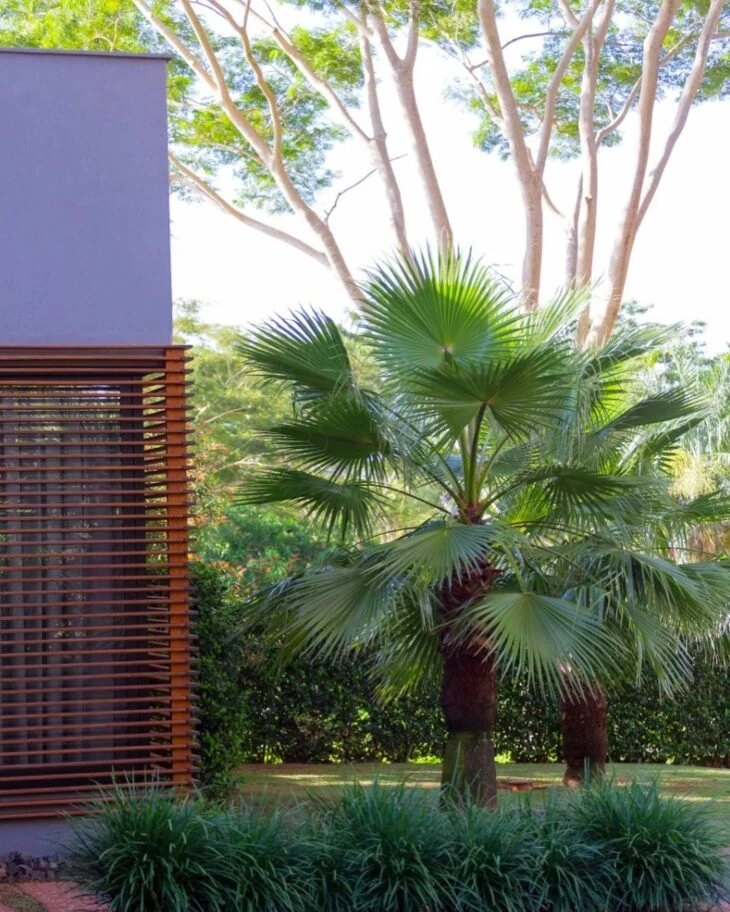
3. the adult wahingtonia palm tree harmonized very well with this two-story house

The main entrance of the residence is highlighted by the use of palm trees in the garden

5. here, fan palms are the central focus of the entrance garden

6. the young fan palm can be used in flowerbeds
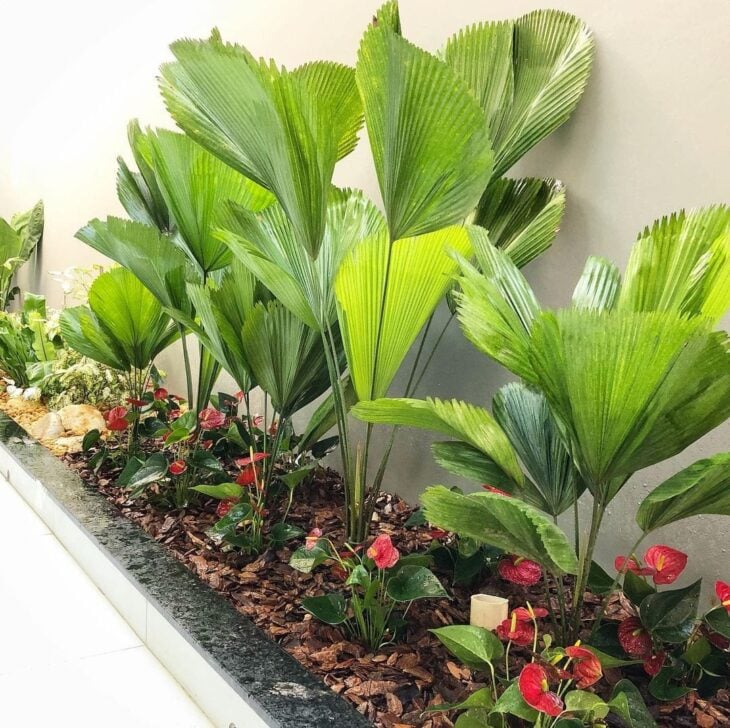
7. the seedlings gave life to this indoor garden under a staircase

8. the thorn palms combined well with the rest of the vegetation to give a tropical look

9. here, an adult fan palm planted in full sun near the swimming pool

10. goes very well planted alone in the garden

11. the ambiance of this water mirror was amazing with the special touch of palm trees
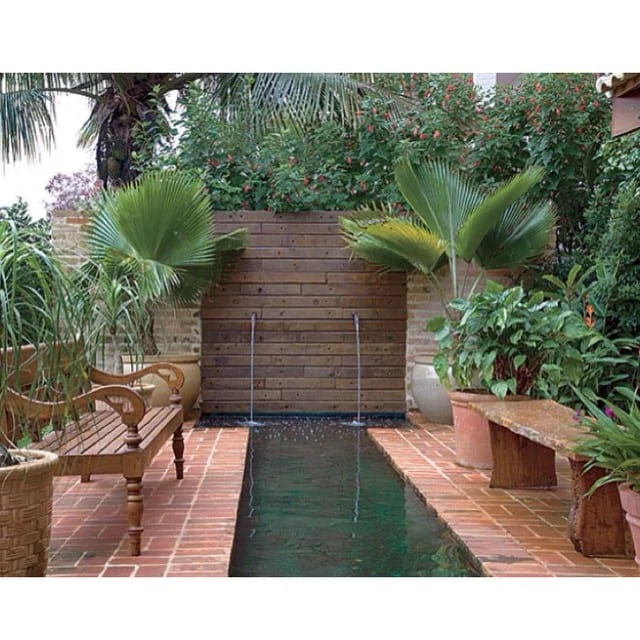
12. this view of the palm tree with the vertical garden is beautiful and adds value to the environment
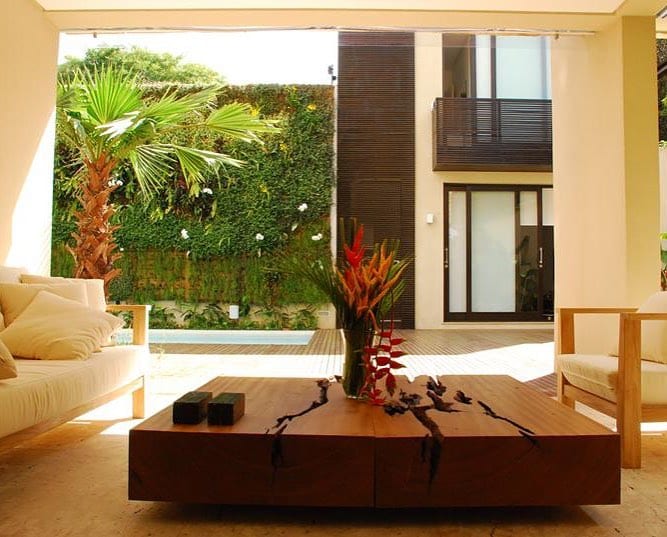
13. washingtonia palm blends in with the low vegetation

14. and here it has developed very well into a balcony
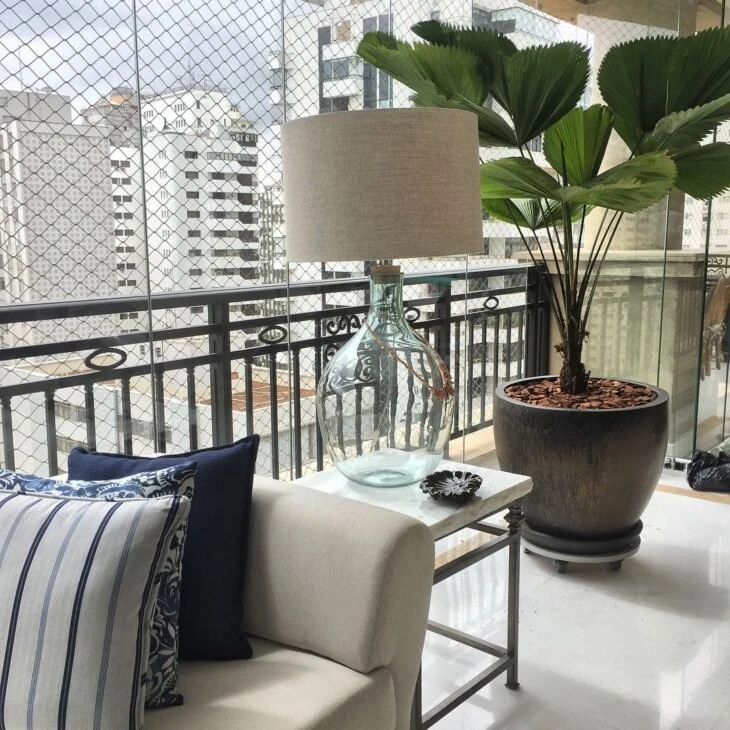
15. the vietnamese vase matches the palm tree
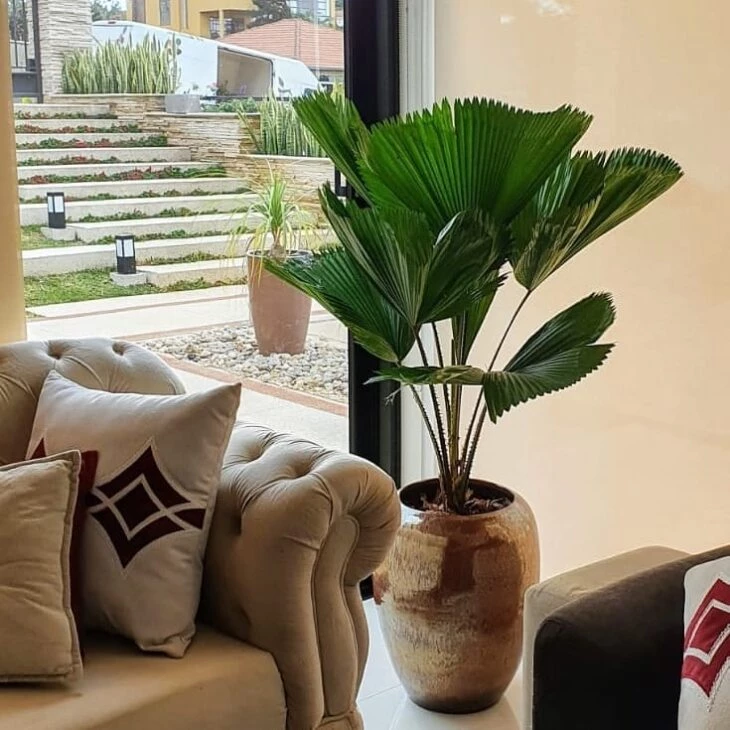
16. and a set of vases can adorn the interior of a shopping mall
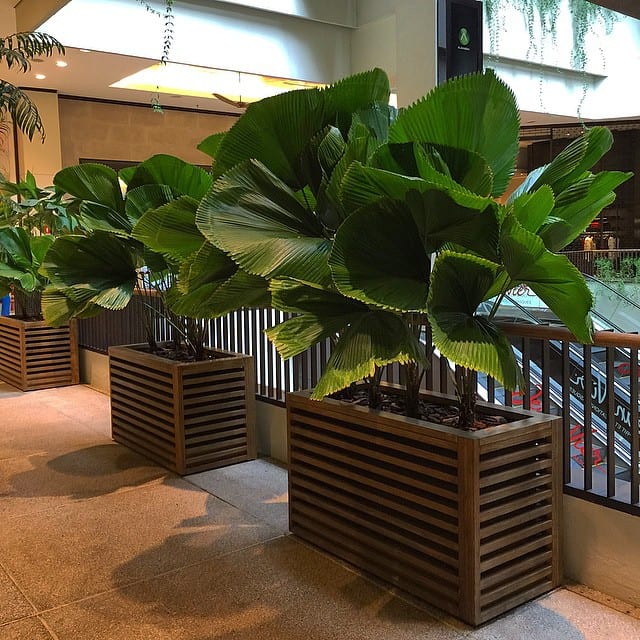
The combination with the straw vase is super-charming
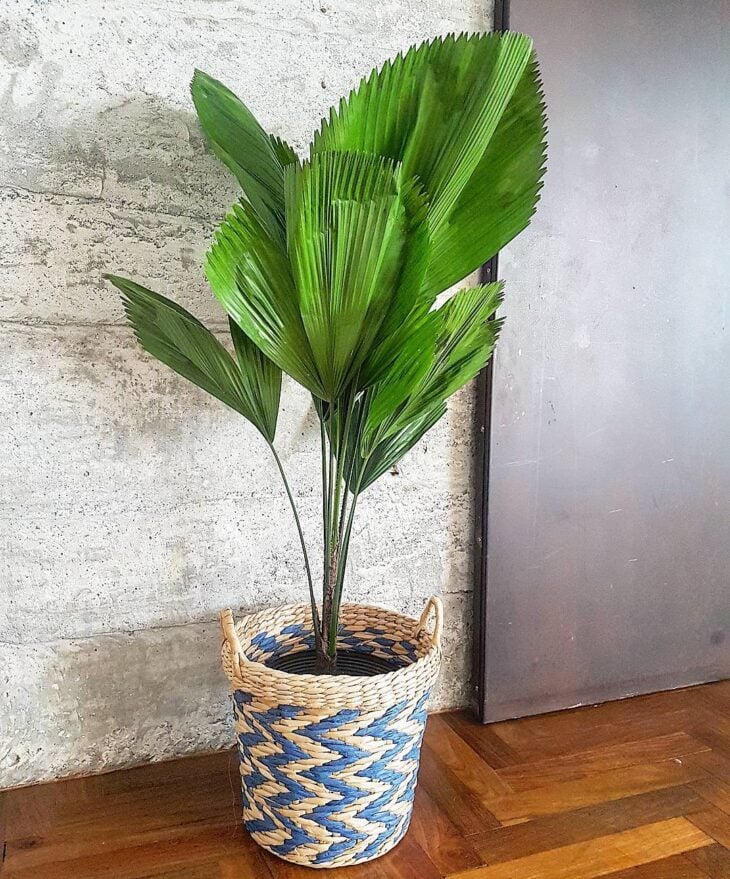
18. the pot with a caster makes it easy to move the plant around, so it can sunbathe and decorate an area with less light

19. the corner of the stairway was enhanced by the presence of the palm tree

20. cachepots are supermodern and go very well with young seedlings of the fan palm
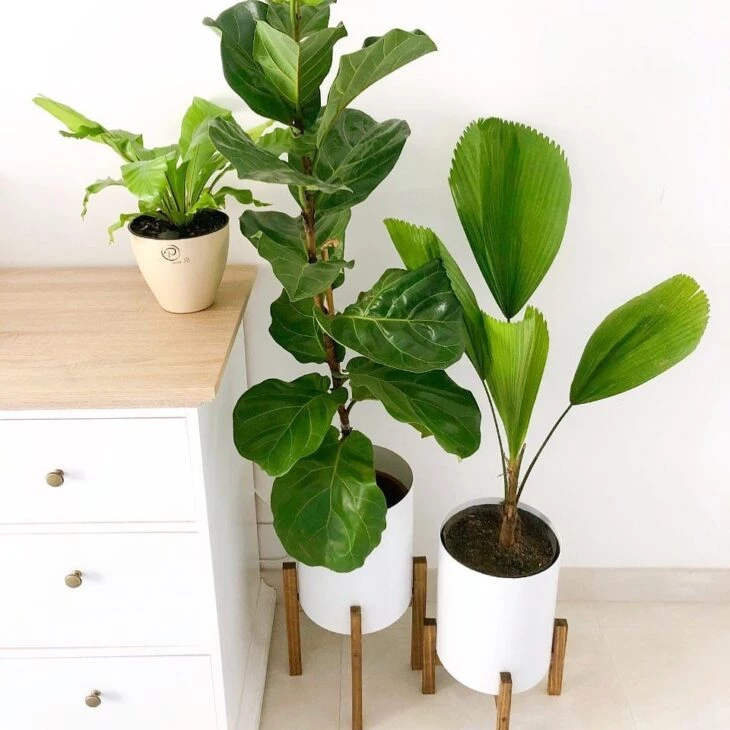
21. plants in the office improved the quality of your working time
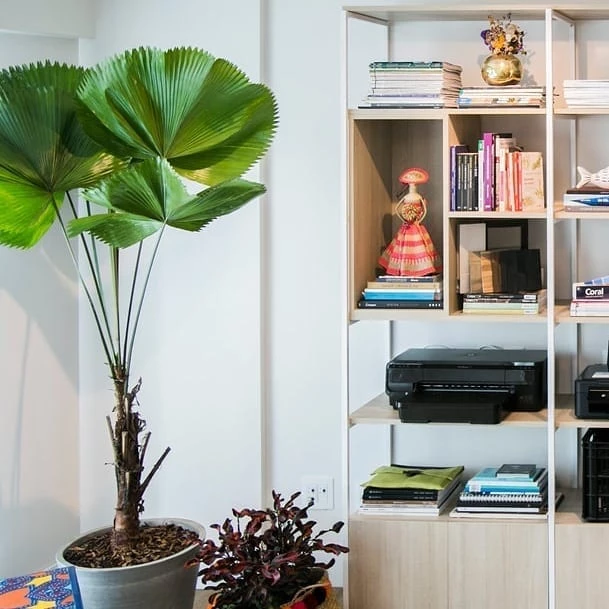
22. the licuala grandis looks beautiful in this ball vase
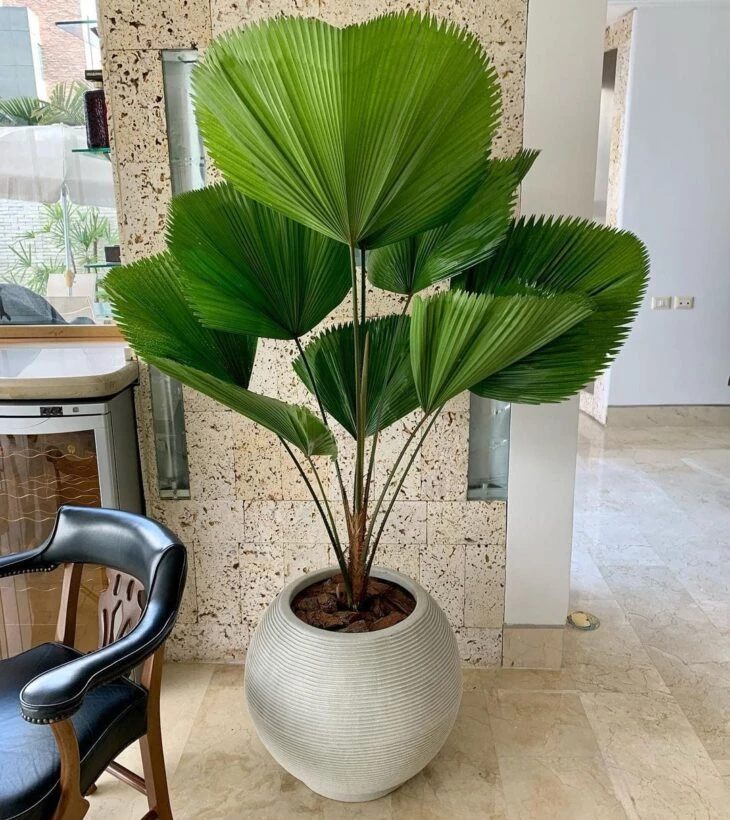
23. the palm leaves can be cut off and used to decorate vases
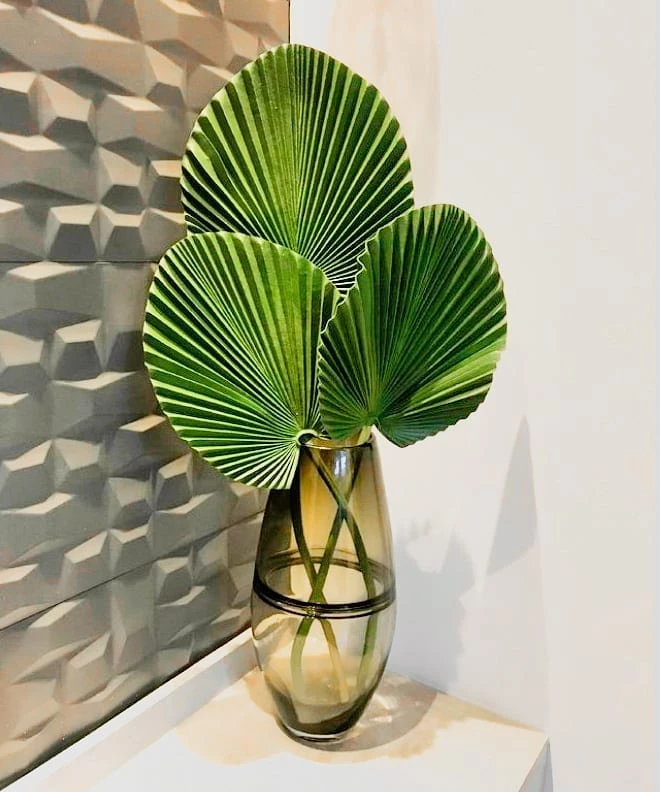
24. this vase looks beautiful with the arrangement of flowers and lycalyptus leaves
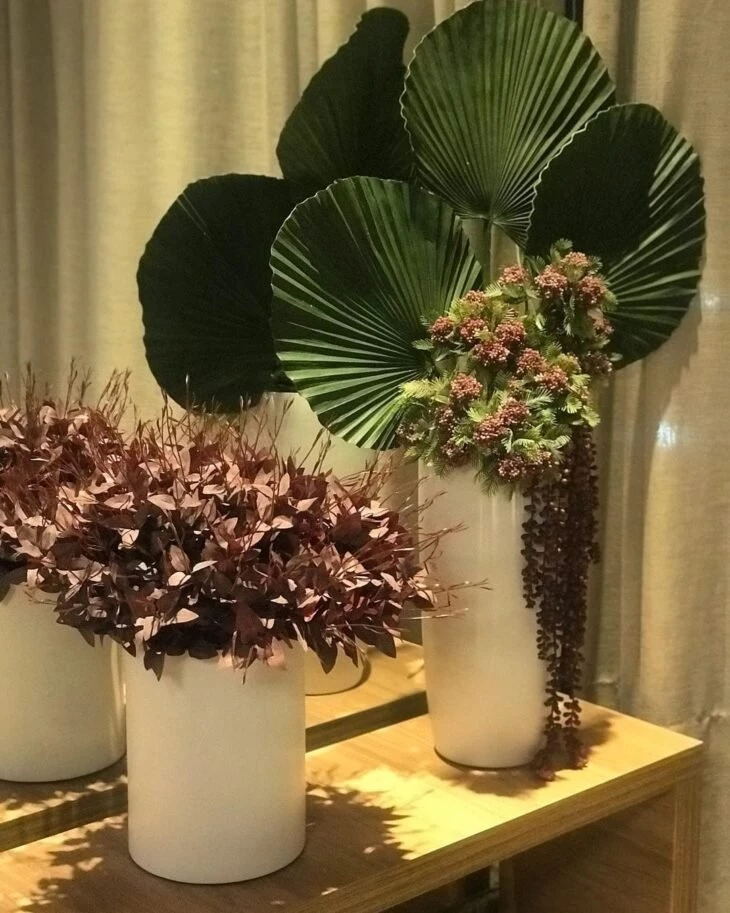
25. the neutral room got a touch of color
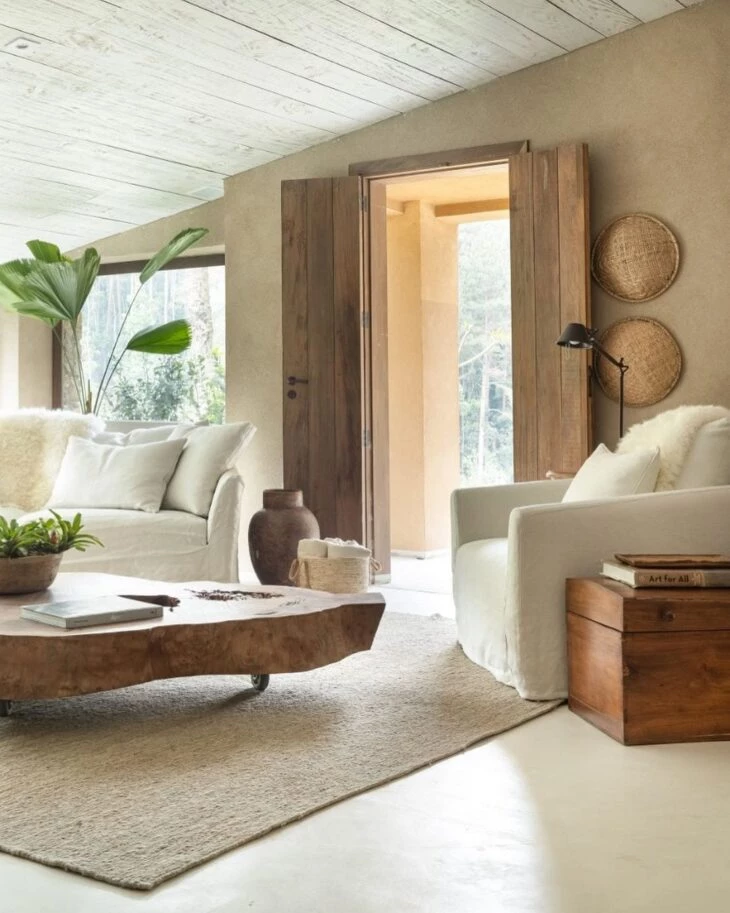
26. the dried leaves of your palm tree can become a beautiful decorative item
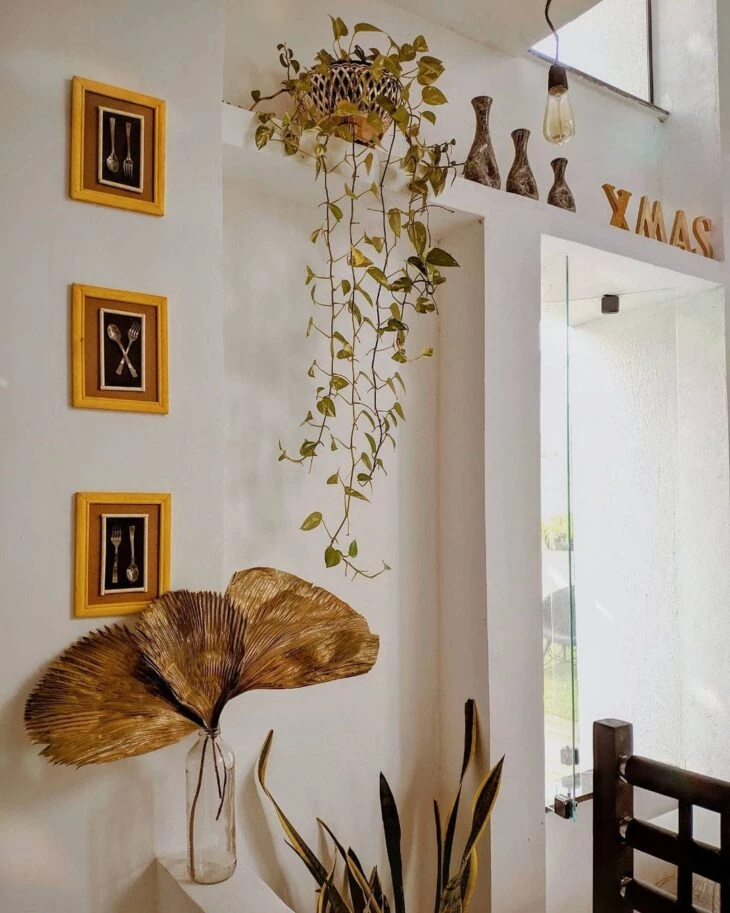
27. the panel for this event was made with palm leaves painted in neutral tones, beautiful, isn't it?
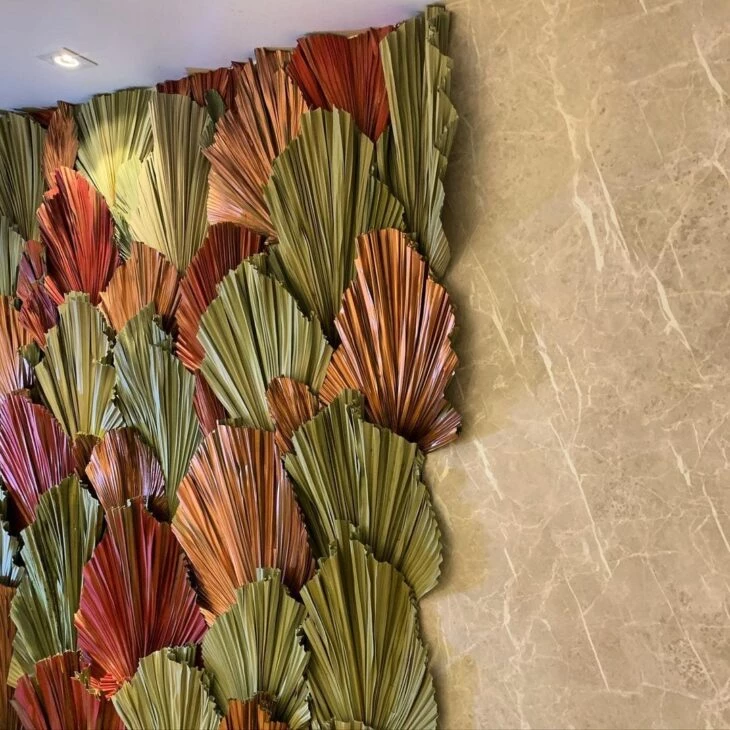
28. another arrangement with painted leaves, these painted with blue and gold
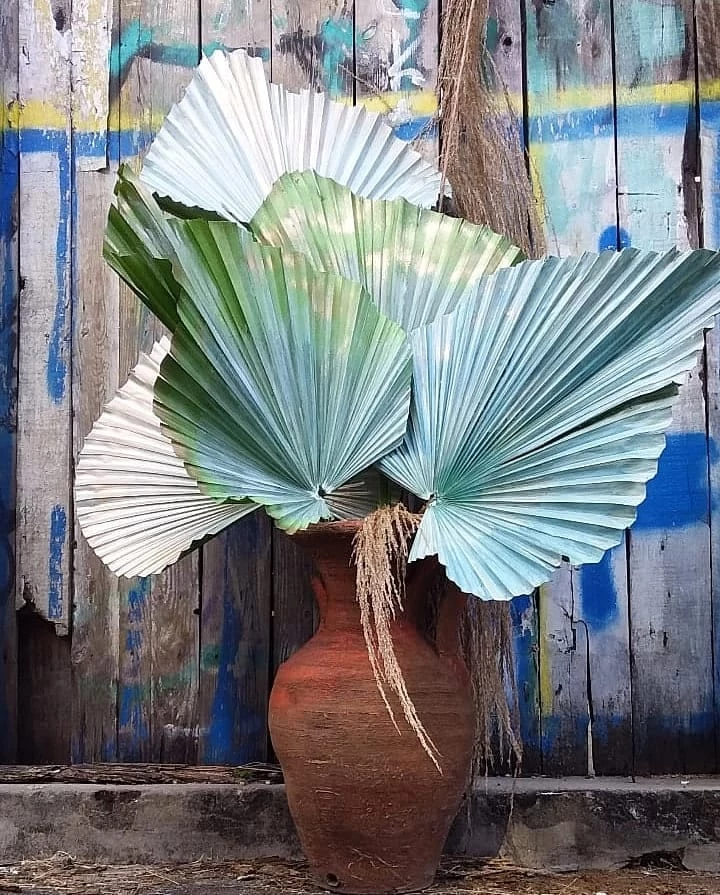
I hope you are inspired to purchase a fan palm for your home, but other great options for decorating your garden are the meadow palm and the ficus elastica.


